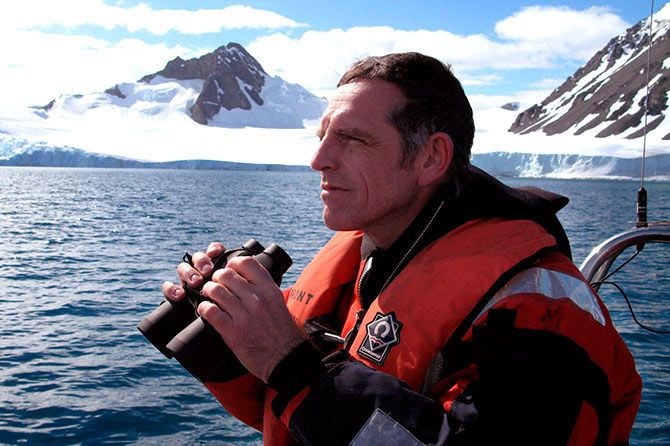And why YOU should worry about it.

Photograph: John Sonntag/NASA
The Larsen C rift -- seen from NASA's DC-8 research aircraft, during an Operation IceBridge flight -- in November, 2016.
In 2014, a crack that had been slowly growing in the ice shelf for decades suddenly accelerated. A vast iceberg finally broke off the Larsen C Ice Shelf this week.

Photograph: British Antarctic Survey
The iceberg, which reduced the size of Larsen C by at least 12 per cent, is almost 6,000 sq km in area. It is the size of the island of Bali.
Its volume is twice that of Lake Erie (America's fourth largest lake), and it weighs about 1.1 trillion tonnes.
'The iceberg is one of the largest recorded,' said Adrian Luckman of Wales' SwanseaUniversity, who led a project tracking the crack since 2015.
The Scientific American added, 'It's large enough that maps will have to be redrawn. Larsen C was the fourth-largest ice shelf in the world. Now it's the fifth.'
Video: European Space Agency
Ice shelves produce an iceberg every few decades. And according to the European Space Agency, which was monitoring the rift, 'There is not enough information to know whether the calving event on Larsen C is an effect of climate change or not.'
But it noted, 'There is good scientific evidence that climate change has caused thinning of the ice shelf.'

Photograph: NASA
Larsen is situated along the northeastern coast of the Antarctic Peninsula, one of the fastest-warming places on the planet.
Over the last two decades, two large sections of the ice shelf have collapsed. According to NASA, 'Most scientists think the combination of warming air and water were responsible for the 1995 [Larsen A] and 2002 [Larsen B, pictured] collapses.'
NASA added, 'What is not apparent from this image is that the thickness of the remaining ice shelves has also changed.'
According to Christopher Shuman of NASA, who has studied the ice edges for three decades, Larsen A and B thinned at a rate of 2 to 3 meters per year between 2003 and 2009.
'The thinning is partly due to warm air melting the ice shelf from above and partly from warm ocean water melting it from below,' he said.

Photograph: Stuart McDill/Reuters
At the edge of the Sheldon glacier on the Antarctic Peninsula -- a place that was smothered by ice before the glacier started to retreat, probably because of global warming.
The breaking away of the iceberg from Larsen C, now named A-68, created headlines around the world due to the current political climate. But scientists are still investigating the nuances of this particular event.
They have clarified that the breaking away of the iceberg in itself will not immediately raise the sea level; it is what comes after that the world needs to worry about.
Professor David Vaughan (pictured above), glaciologist and Director of Science, BAS, pointed out that the collapse of Larsen A and B ice shelves 'resulted in the dramatic acceleration of the glaciers behind them, with larger volumes of ice entering the ocean and contributing to sea-level rise.'
He warned, 'If Larsen C now starts to retreat significantly and eventually collapses, then we will see another contribution to sea level rise.'
Shuman of NASA explained the phenomenon: 'You can think of the Larsen or really any ice shelf like it is a cork in the neck of a champagne bottle lying on its side. Once you pop that cork, the wine inside -- all that glacial ice sitting on land -- will start flowing out. And that's worrisome because such thinning land ice is directly increasing global sea levels. With other floating ice thinning and retreating elsewhere in Antarctica, it sure looks like many corks are ready to pop.'

Photograph: Pauline Askin/Reuters
Given India's vast and densely populated coastline, anything that contributes to rising sea levels is a major threat.
India has already witnessed the impact of rising sea levels in regions like the Sundarbans and Majauli. And a 2016 United Nations report warned that nearly 40 million Indians would be at risk from rising sea levels by 2050.
Scientists like Professor Adrian Luckman of Swansea University and lead investigator of Project MIDAS, which has been monitoring the crack, have assured that they "will continue to monitor both the impact of this calving event on the Larsen C ice shelf, and the fate of this huge iceberg [its travel pattern and for any potential risk to shipping traffic]."











